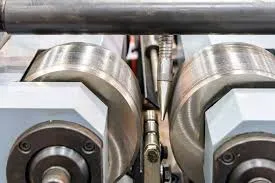
-
 Afrikaans
Afrikaans -
 Albanian
Albanian -
 Amharic
Amharic -
 Arabic
Arabic -
 Armenian
Armenian -
 Azerbaijani
Azerbaijani -
 Basque
Basque -
 Belarusian
Belarusian -
 Bengali
Bengali -
 Bosnian
Bosnian -
 Bulgarian
Bulgarian -
 Catalan
Catalan -
 Cebuano
Cebuano -
 Corsican
Corsican -
 Croatian
Croatian -
 Czech
Czech -
 Danish
Danish -
 Dutch
Dutch -
 English
English -
 Esperanto
Esperanto -
 Estonian
Estonian -
 Finnish
Finnish -
 French
French -
 Frisian
Frisian -
 Galician
Galician -
 Georgian
Georgian -
 German
German -
 Greek
Greek -
 Gujarati
Gujarati -
 Haitian Creole
Haitian Creole -
 hausa
hausa -
 hawaiian
hawaiian -
 Hebrew
Hebrew -
 Hindi
Hindi -
 Miao
Miao -
 Hungarian
Hungarian -
 Icelandic
Icelandic -
 igbo
igbo -
 Indonesian
Indonesian -
 irish
irish -
 Italian
Italian -
 Japanese
Japanese -
 Javanese
Javanese -
 Kannada
Kannada -
 kazakh
kazakh -
 Khmer
Khmer -
 Rwandese
Rwandese -
 Korean
Korean -
 Kurdish
Kurdish -
 Kyrgyz
Kyrgyz -
 Lao
Lao -
 Latin
Latin -
 Latvian
Latvian -
 Lithuanian
Lithuanian -
 Luxembourgish
Luxembourgish -
 Macedonian
Macedonian -
 Malgashi
Malgashi -
 Malay
Malay -
 Malayalam
Malayalam -
 Maltese
Maltese -
 Maori
Maori -
 Marathi
Marathi -
 Mongolian
Mongolian -
 Myanmar
Myanmar -
 Nepali
Nepali -
 Norwegian
Norwegian -
 Norwegian
Norwegian -
 Occitan
Occitan -
 Pashto
Pashto -
 Persian
Persian -
 Polish
Polish -
 Portuguese
Portuguese -
 Punjabi
Punjabi -
 Romanian
Romanian -
 Russian
Russian -
 Samoan
Samoan -
 Scottish Gaelic
Scottish Gaelic -
 Serbian
Serbian -
 Sesotho
Sesotho -
 Shona
Shona -
 Sindhi
Sindhi -
 Sinhala
Sinhala -
 Slovak
Slovak -
 Slovenian
Slovenian -
 Somali
Somali -
 Spanish
Spanish -
 Sundanese
Sundanese -
 Swahili
Swahili -
 Swedish
Swedish -
 Tagalog
Tagalog -
 Tajik
Tajik -
 Tamil
Tamil -
 Tatar
Tatar -
 Telugu
Telugu -
 Thai
Thai -
 Turkish
Turkish -
 Turkmen
Turkmen -
 Ukrainian
Ukrainian -
 Urdu
Urdu -
 Uighur
Uighur -
 Uzbek
Uzbek -
 Vietnamese
Vietnamese -
 Welsh
Welsh -
 Bantu
Bantu -
 Yiddish
Yiddish -
 Yoruba
Yoruba -
 Zulu
Zulu
thread rolling machine video
The Art and Science of Thread Rolling A Deep Dive into the Process
Thread rolling is a manufacturing process that has gained significant attention in recent years due to its efficiency and ability to create high-strength, precise threads on various materials. Recent developments in technology have led to improved thread rolling machines, which are capable of producing a wide variety of threaded fasteners for different industrial applications. In this article, we will explore the fundamentals of thread rolling, its advantages, and the modern machines employed in the process, including an examination of instructional videos that showcase these innovations.
Thread rolling is a cold-forming technique that shapes metal into threads by using rotating dies. This method is primarily used for producing fasteners like bolts, screws, and nuts. The process commences with a cylindrical workpiece or blank that is placed between two dies. As the dies roll over the blank, they deform the material, forcing it into the desired thread shape. This cold working process significantly enhances the mechanical properties of the material, as it aligns the grain structure, resulting in improved strength and durability.
The Art and Science of Thread Rolling A Deep Dive into the Process
The efficiency of thread rolling machines has been greatly improved by advancements in automation and control systems. Modern machines are designed to operate with precision, offering programmable settings that allow for the quick adjustment of parameters such as speed, pressure, and rolling duration. This level of customization is crucial for meeting the diverse requirements of different industries, ranging from automotive to aerospace.
thread rolling machine video

Videos demonstrating thread rolling machinery provide an invaluable resource for understanding this complex process. These instructional videos often showcase the operations in action, illustrating how rolls turn and compress the workpiece into threads while highlighting the meticulous setup required before production. By observing these processes, viewers can gain insight into the intricacies of the equipment and the considerations necessitated by various materials.
One notable machine featured in many thread rolling videos is the automatic thread rolling machine. This machine is equipped with multiple spindles, allowing for the simultaneous production of multiple fasteners. This feature significantly increases output, making it an ideal choice for high-volume manufacturing environments. Furthermore, these machines often come with built-in quality control mechanisms that continuously monitor the production process, ensuring that each thread meets stringent specifications.
In addition to quality and efficiency, thread rolling machines are also energy-efficient compared to other methods of thread production. As they require minimal energy input to operate, they generate less heat, making them safer and more environmentally friendly. This efficiency is crucial as industries increasingly focus on sustainable practices and reducing their carbon footprint.
In conclusion, the art of thread rolling is a fascinating blend of science and precision engineering. With the help of advanced machines and techniques, manufacturers can produce high-quality threaded components with remarkable speed and strength. Watching instructional videos related to thread rolling provides a fascinating glimpse into this innovative manufacturing process, revealing how it continues to evolve and adapt to meet the changing demands of various industries. As technology advances further, we can expect even more refined methods of thread production, solidifying thread rolling's role as a cornerstone of modern manufacturing.
